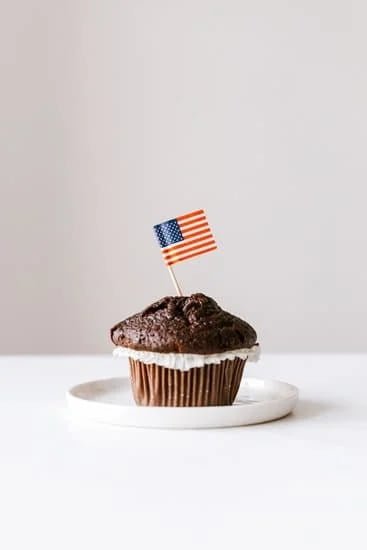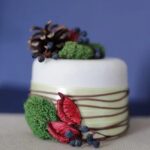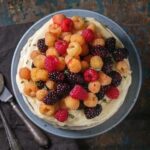Are you ready to take your baking skills to the next level? Learning how to decorate a cake step by step is not only a fun and creative process but also adds a beautiful touch to your homemade desserts. Whether it’s for a special occasion or just for fun, mastering cake decorating techniques can elevate your confectionery creations and impress friends and family.
Decorating a cake involves more than just slapping on some frosting. It requires careful planning, patience, and attention to detail. In this article, we will guide you through the process of creating beautifully decorated cakes, from gathering the necessary tools and ingredients to putting the finishing touches on your masterpiece. By following our step-by-step instructions, you’ll be able to achieve professional-looking results right in your own kitchen.
From choosing the right tools and ingredients to discovering different frosting and icing techniques, this article will provide you with all the information you need to get started on your cake decorating journey. Whether you’re a beginner or have some experience, there’s always something new to learn in the world of cake decorating. So, let’s roll up our sleeves and dive into the art of creating show-stopping cakes.
Gathering the Necessary Tools and Ingredients
Once you’ve decided to take on the task of decorating a cake, it’s important to gather all the necessary tools and ingredients to ensure everything goes smoothly. Here’s a list of essential items you’ll need before starting the decorating process:
- Cake: Whether you choose to bake your own or purchase a pre-made cake, ensure that it is completely cooled before beginning the decoration process.
- Frosting or Icing: Depending on your preference, select either buttercream, royal icing, fondant, or ganache for your cake frosting.
- Offset Spatula: This tool will help you spread the frosting evenly across the cake’s surface.
- Piping Bags and Tips: These are essential for creating intricate designs and adding decorative elements to your cake.
- Decorative Edible Items: Gather items such as edible flowers, sprinkles, edible glitter, and other decorations that match the theme of your cake.
Now that you have all the necessary tools and ingredients ready, let’s move on to preparing the cake for decorating.
Remember to always choose quality ingredients and tools when working on a decorated cake. Investing in good-quality products will make the decorating process easier and more enjoyable.
Preparing the Cake for Decorating
Before diving into the actual decorating part, it’s crucial to properly prepare the cake to ensure a smooth and even surface for frosting. Follow these steps:
- Leveling: Use a long serrated knife or a cake leveler to trim off any raised areas on the top of the cake. This will create a flat surface for even frosting application.
- Crumbs Coating: Apply a thin layer of frosting around the entire cake. This initial coat seals in any loose crumbs and provides a clean base for adding more frosting later.
Once you’ve leveled and crumb-coated your cake, it’s time to move on to step-by-step frosting and icing techniques.
Preparing the Cake for Decorating
Before you can begin the fun part of decorating your cake, you’ll need to prepare the cake itself. Here’s a step-by-step guide on how to get your cake ready for decorating:
1. Leveling the Cake: Use a long serrated knife to carefully level off the top of your cake, creating an even surface for decorating. If needed, you can also trim any uneven edges to ensure a smooth base for your decorations.
2. Applying Simple Syrup (Optional): For added moisture and flavor, you can brush a thin layer of simple syrup onto each layer of your cake before frosting. This step is particularly helpful if you plan on storing the cake for an extended period of time.
3. Crumb Coating: To prevent any pesky crumbs from getting into your final layer of frosting, start by applying a thin layer of frosting all over the cake – this is known as a crumb coat. Once applied, let it set in the fridge for about 30 minutes before moving on to the final layer of frosting.
By following these steps, you’ll have a perfectly prepped canvas ready for decorating. Now that your cake is prepared, it’s time to move on to the next step and learn how to decorate a cake step by step with different frosting and icing techniques.
Step by Step Frosting and Icing Techniques
Choosing the Right Frosting
When it comes to decorating a cake, the type of frosting you choose can make a big difference in the final result. Buttercream, cream cheese, fondant, and royal icing are just a few options to consider. Each type of frosting has its own unique flavor, texture, and suitability for different decorating techniques. It’s important to choose the right frosting for your specific design and desired outcome.
Crumb Coat and Chill
Before you start applying frosting or icing to your cake, it’s crucial to create a crumb coat. This thin layer of frosting helps seal in any loose crumbs, creating a smooth base for your final frosting layer.
After applying the crumb coat, it’s advisable to chill the cake for at least 30 minutes to allow the initial layer of frosting to set. This step will make it much easier to add additional layers of frosting without disturbing the cake’s surface.
Applying and Smoothing the Frosting
Once the crumb coat has chilled, it’s time to apply the final layer of frosting or icing. Using an offset spatula or a bench scraper can help achieve even layers of frosting on the top and sides of your cake.
To achieve smooth and flawless surfaces, there are various techniques like the “spackle” method or using a hot spatula to melt buttercream that can be employed depending on the type of frosting being used. Smooth edges and clean surfaces provide an excellent canvas for further design work.
By following these step-by-step techniques for choosing the right frosting, creating a crumb coat, and applying smooth layers of frosting or icing, you’ll be better equipped with how to decorate a cake step by step with professional results.
Creating Intricate Designs With Piping Bags
One of the most popular and effective ways to decorate a cake is by using piping bags to create intricate designs. Whether you’re a beginner or an experienced baker, mastering piping techniques can take your cake decorating skills to the next level. Here’s how to decorate a cake step by step using piping bags.
First, you’ll need to prepare your icing. Make sure it’s at the right consistency for piping – not too thick that it won’t come out of the bag, and not too thin that it will run all over the cake.
Practice making different consistencies of icing until you get it just right. Then, fill your piping bag with the desired icing color and twist or fold the top of the bag to ensure that the icing doesn’t squeeze out the other end as you pipe.
Next, decide on the design you want to create on your cake. You can start with simple lines or shapes before moving on to more intricate designs like flowers, leaves, or script writing. To practice, draw your design on parchment paper first before attempting it on the actual cake. This will help you perfect your technique and ensure that you’re happy with how it looks before committing it to the cake itself.
The key to successful piping is steady hand movement and even pressure on the bag. Hold the piping bag at a 90-degree angle from the surface of the cake and gently squeeze while guiding the tip in your desired pattern.
Remember that practice makes perfect when it comes to piping, so don’t be discouraged if your first few attempts don’t turn out exactly as planned. With patience and persistence, you’ll soon be creating beautiful and intricate designs with ease.
| Step | Description |
|---|---|
| 1 | Prepare icing at appropriate consistency |
| 2 | Draw design on parchment paper as practice |
| 3 | Hold piping bag at 90-degree angle and apply even pressure for steady hand movement |
Personalizing With Edible Decorations
When it comes to making a cake truly special, adding edible decorations can take your creation to the next level. Edible decorations can include a wide range of items such as edible flowers, chocolate shavings, fondant shapes, and even edible glitter. The key to successfully decorating with these items is to ensure they complement the overall design and flavor of the cake.
To begin personalizing your cake with edible decorations, start by considering the theme or occasion for the cake. For example, if you are decorating a birthday cake for a child who loves dinosaurs, you might choose to use fondant to create small dinosaur shapes or use edible paint to create a prehistoric scene on top of the cake. Similarly, if you are decorating a wedding cake, delicate edible flowers or elegant fondant designs might be more appropriate.
Next, consider the color scheme and flavor profile of the cake. If you are working with a citrus-flavored cake, consider using brightly colored edible flowers or citrus zest as decorations. For a rich chocolate cake, dark chocolate shavings or curls can make an elegant addition. By being mindful of these details, you can ensure that your edible decorations not only look beautiful but also enhance the taste of the finished product.
Finally, when placing your edible decorations on the cake, be sure to do so with intention and precision. Consider creating balance in your design by spacing out decorations evenly and strategically placing them for visual impact. Whether you’re using sprinkles or intricate fondant designs, every detail matters in creating a stunning finished product.
| Edible Decoration | Example |
|---|---|
| Edible Flowers | Rose petals for wedding cakes |
| Chocolate Shavings | Curls or shavings for rich chocolate cakes |
| Fondant Shapes | Dinosaur shapes for children’s birthday cakes |
Final Touches and Finishing Details
Once you’ve completed the frosting, piping, and adding edible decorations to your cake, it’s time for the final touches and finishing details. These steps are crucial to ensure that your cake looks polished and professional.
Smoothing the Frosting
Using a frosting smoother or offset spatula, carefully go over the frosted areas of the cake to smooth out any imperfections or air bubbles. Start from the top and work your way down the sides, applying gentle pressure as you go.
Adding Texture
If you want to add texture to your cake, consider using tools like combs or textured mats to create unique patterns on the frosting. You can also use different piping tips to add decorative borders around the edges of the cake.
Applying Finishing Touches
To truly elevate your decorated cake, consider adding finishing touches such as fresh flowers, edible glitter, or even gold leaf accents. These extra details can take your cake from beautiful to breathtaking.
By following these final steps for decorating a cake step by step, you can achieve a professional-looking result that will impress any guest at your next event. Remember that practice makes perfect when it comes to cake decorating, so don’t be afraid to experiment with different techniques and designs. With patience and creativity, you can create stunning cakes that are almost too beautiful to eat.
Tips for Preserving and Displaying the Decorated Cake
In conclusion, learning how to decorate a cake step by step can be a fun and rewarding experience for both novice and experienced bakers. From gathering the necessary tools and ingredients to adding the final touches, cake decorating allows for a great deal of creativity and personalization. By following the outlined steps, you can elevate your homemade or store-bought cakes into stunning works of edible art.
One of the most important aspects of cake decorating is preserving and displaying the finished product. After spending time and effort on creating a beautifully decorated cake, it’s essential to ensure that it stays fresh and visually appealing until it’s time to be served. Whether you choose to refrigerate or freeze your cake, following proper storage techniques will help maintain its taste and appearance.
Another key element in preserving the integrity of your decorated cake is how it is displayed. A well-decorated cake deserves an attractive display. Consider using a cake stand or decorative platter that complements the theme or design of the cake. Properly presenting your creation will not only enhance its visual appeal but also make it more inviting to your guests when it’s time to enjoy a slice.
Frequently Asked Questions
What Are the Steps in Cake Decorating?
The steps in cake decorating typically involve preparing the cake, applying a crumb coat of frosting, piping designs or borders, and adding decorative elements such as fondant shapes or edible flowers. The final step is to ensure the cake is displayed and stored properly.
How Do You Decorate a Cake in a Simple Way?
Decorating a cake in a simple way can be done by using basic tools like a spatula or icing smoother to create textured designs on the frosting. Adding fresh fruit, chocolates, or sprinkles can also add an easy yet appealing touch to the cake.
What Does a Beginner Need for Cake Decorating?
For beginner cake decorators, essential tools include an offset spatula for spreading frosting, piping bags and tips for creating designs, a turntable for easy access to all sides of the cake, and basic food coloring gels for creating different colored frostings. These tools will help beginners get started with their cake decorating journey.

Welcome to our cake decorating blog! My name is Destiny Flores, and I am the proud owner of a cake decorating business named Cake Karma. Our mission is to provide delicious, beautiful cakes for all occasions. We specialize in creating custom cakes that are tailored specifically to each customer’s individual needs and tastes.





